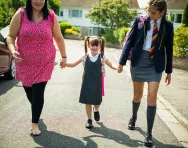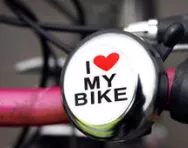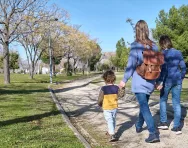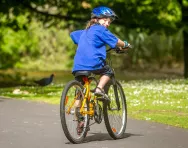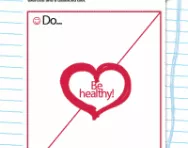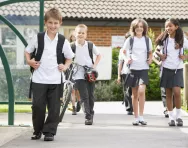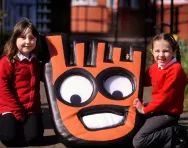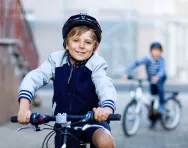Important update from TheSchoolRun
For the past 13 years, TheSchoolRun has been run by a small team of mums working from home, dedicated to providing quality educational resources to primary school parents. Unfortunately, rising supplier costs and falling revenue have made it impossible for us to continue operating, and we’ve had to make the difficult decision to close. The good news: We’ve arranged for another educational provider to take over many of our resources. These will be hosted on a new portal, where the content will be updated and expanded to support your child’s learning.
What this means for subscribers:
- Your subscription is still active, and for now, you can keep using the website as normal — just log in with your usual details to access all our articles and resources*.
- In a few months, all resources will move to the new portal. You’ll continue to have access there until your subscription ends. We’ll send you full details nearer the time.
- As a thank you for your support, we’ll also be sending you 16 primary school eBooks (worth £108.84) to download and keep.
A few changes to be aware of:
- The Learning Journey weekly email has ended, but your child’s plan will still be updated on your dashboard each Monday. Just log in to see the recommended worksheets.
- The 11+ weekly emails have now ended. We sent you all the remaining emails in the series at the end of March — please check your inbox (and spam folder) if you haven’t seen them. You can also follow the full programme here: 11+ Learning Journey.
If you have any questions, please contact us at [email protected]. Thank you for being part of our journey it’s been a privilege to support your family’s learning.
*If you need to reset your password, it will still work as usual. Please check your spam folder if the reset email doesn’t appear in your inbox.
10 ways to be more active on the school run
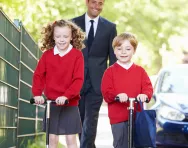
Weekday mornings can be pretty hectic when you’re trying to get to school on time. And amidst the chaos of spilt cereal, forgotten homework and lost PE kit, it’s no surprise that many of us – despite our best intentions – find it easiest to jump in the car to do the school run.
But organising your morning so you can make the trip to school on foot (or on two wheels) is well worth a bit of extra effort.


Start a unique learning programme!
- Weekly programme for each school year
- Worksheets sent direct to your inbox
- Keeps your child's learning on track
‘Active travel is a great way to build physical activity into everyday life and improve fitness and mental wellbeing,’ says Chris Bennett, Head of Behaviour Change at Sustrans, the UK walking and cycling charity.
‘Teachers find that pupils who don’t arrive by car are more relaxed, alert and ready to start the day.
‘In addition, walking, scooting or cycling provides the perfect opportunity for kids to learn about their local area, develop wider real-life social networks and gain independence.’
Committing to change your travel habits also means you’ll be doing your bit for the environment and helping to relieve congestion on the roads.
According to Sustrans, the average journey to primary school is a manageable 1.6 miles: that’s about a 30-minute walk, and considerably less on a bike or scooter. Many families, however, get into the car by default: in fact, a quarter of all cars on the road in the morning rush hour are dropping kids at school.
We asked Chris to share his top tips for an active school run.
1. Be prepared
‘Mornings are a busy time for parents, and it can be overwhelming getting the kids ready to cycle or scoot on top of all the things that need to be done before setting off,’ Chris says.
‘However, with a little preparation, cycling or scooting can be the best way to travel to school, so pack bags the night before and leave helmets by the front door, so in the morning you can just get up and go.’
2. Make it fun
Kids who are used to being driven to school might well moan about having to walk, scoot or cycle, but once they get into it, they’re likely to find it enjoyable.
‘Ease into your new morning routine with small trips to the park, and build up to the journey to school gradually,’ Chris suggests.
‘Keep younger children entertained by talking about what you see throughout the journey. This will help them to get to know their local area and feel part of it, while also making the trip more fun.’
3. Choose an easy route
To make the school run easy on little legs, choose a smooth, flat route that’s suitable for younger walkers or cyclists.
‘You might be surprised by how many quiet roads or back streets there are in your area that lead to school,’ Chris says.
If you live in a major town or city, check out the National Cycle Network: a series of traffic-free paths and quiet on-road routes that’s designed to make cycling or walking easier and safer. Canal towpaths and routes through parks are also good options, if they’re accessible.
4. Be safe
Many parents are concerned about whether it’s safe for their children to walk or cycle to school, with danger from traffic their biggest fear. In fact, according to Sustrans research, nearly half of all children would like to cycle to school, but only 4% are allowed to.
‘The fear of traffic has driven children into the back seat to be ferried around, with 42% of primary pupils now being driven to school,’ Chris explains.
‘If you’re concerned about cycling safety, ride in a line with children in the middle of adults for maximum protection and visibility. If there’s only one adult, take up a position at the back to ensure all children are in plain view.’
5. Choose the right bike or scooter
If you’re going to cycle or scoot to school, try to purchase a bike or scooter that’s the right size for your child, and resist the temptation to buy one that’s too big that they’ll ‘grow into.’
‘A large bike or scooter will be more difficult to control, and can put young children off,’ says Chris.
6. Take part in cycle training
Courses like Bikeability are great fun and have come a long way since the old days of cycling proficiency. Many children do Bikeability at school, or you can find out about out-of-school sessions.
‘Cycle training teaches valuable skills such as good road positioning, signalling and visibility, and can help parents and children feel at ease on busy streets,’ Chris explains.
7. Use Park and Stride facilities
Walking, cycling or scooting from home to school isn’t always a viable choice for families, particularly if you live a long way away, but you can still build activity into your school run by parking 10 minutes from school and doing the rest on foot.
Many schools have ‘Park and Stride’ schemes with set parking places a short distance away, for example at churches, pubs or supermarkets. Even if yours doesn’t, you can usually identify suitable places to park in the local area.
‘As well as making your school run more active, this helps to prevent congestion and air pollution at the school gates, making the environment around the school as child-friendly as possible,’ Chris says.
8. Get the right kit
Carrying heavy books and equipment is often seen as a barrier to walking, cycling or scooting to school, but using a sturdy backpack or cycle panniers will mean your child can take all their kit without being too encumbered.
‘Also, remember that if your child is riding to school during the winter months, a white front light and red rear light (constant or flashing) and reflectors are legal requirements when cycling in the dark,’ Chris adds.
It goes without saying that a helmet is essential at all times, too.
9. Cycling with toddlers
If you have a baby or toddler as well as a school-age child, you might be put off cycling to school, but there's now a vast choice of safe and stylish ways to transport younger children, including front and rear child seats and cargo bikes.
‘Cargo bikes, in particular the box-bike style, are ideal for small children around, and depending on the type (and the size and age of your children) it may be possible to transport up to four with space for other cargo such as school bags, too,’ explains Chris.
10. Mix it up
Remember, you don’t have to travel to school in the same way every day, so don’t think that just because you have to drive most days, it’s not worth doing an active school run on the others.
‘For busy families, different ways of journeying to school will work for different days,’ says Chris. ‘Walking, scooting, cycling and park and stride are all good options, and a bit of variety can make the school run more fun, so mix it up and do what works best for you.’
